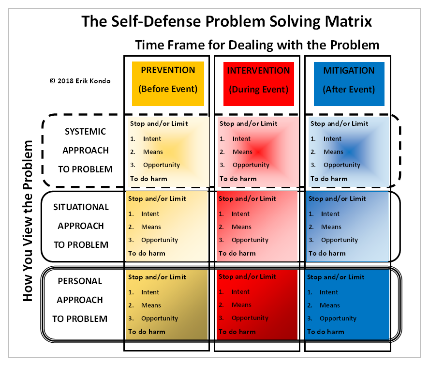School shooting are a problem. Solving this problem requires some type of approach. Here are some commonly discussed and debated proposed solutions in no particular order:
- Pass stricter gun laws making it more difficult for potential shooters to obtain high powered weapons.
- Pass stricter laws on gun magazines making it more difficult for shooters to kill so many people.
- Arm teachers with guns so they can fire back at the shooter.
- Pass stricter background checks to make it more difficult for potential shooters to obtain weapons.
- Make it easier to legally take weapons away from people who are deemed to be mentally ill or dangerous.
- Train students on how to respond to active shooter situations.
- Provide students with bulletproof backpacks.
- Make schools more secure from unauthorized entry.
- Make classrooms more secure from attack.
- Eliminate male aggression in society.
- Provide more resources for mental health.
- Parents provide more discipline for their children.
- Identify potential school shooters through tips.
- Put metal detectors in school entryways.
- Install more security cameras and monitoring equipment.
- Provide teachers with Less-than-Lethal weapons such as tasers, rubber bullets, bean bag shotguns, chemical sprays, etc.
- Teach students how to fight back against active shooters.
- Enact stricter punishment such as the death penalty for school shooters.
- Put mobile bulletproof backboards in the classrooms for students to hide behind.
- Instil children with more family values and morals.
- Stop glorifying violence in TV, movies, video games, and the media.
There are three Primary Methods to deal with a self-defense problem. Each one can be used separately or in combination with the others.
- Stop or limit a person’s Intent to do harm. Where Intent is defined as desire or motivation or ill intent to do harm.
- Stop or limit a person’s Means to do harm. Where Means is the ability or capability to do harm.
- Stop or limit a person’s Opportunity to do harm. Where Opportunity is the circumstances in which it is possible to do harm.
A person requires all three to cause harm. Therefore, stopping or limiting one Primary Method will stop or limit the harm.
All the above listed individual solutions fall into one or more of these three Primary Methods.
Each one of the three Primary Methods can be performed in one or more of three-time frames of:
1. Prevention (before the event),
2. Intervention (during the event), and
3. Mitigation (after the event) with varying degree of effectiveness depending upon the circumstances.
Therefore, there are nine Primary Method Time Phases to deal with school shootings.
There are Three Viewpoints to view school shootings:
- As a Systemic Problem where school shootings are the result of widespread societal and cultural factors.
- As a Situational Problem where school shootings are the result of a certain confluence of factors on a situational basis.
- As a Personal Problem where school shootings are the result of individual factors of the person(s) involved.
Therefore, the nine Primary Method Time Phases can be viewed from one or more of these Three Viewpoints. That makes for a total of twenty-seven (3 x 3 x 3) categories of different approaches for dealing with school shootings. Each of these categories of approaches comes with its own set of advantages, disadvantages, assumptions, truths, and falsehoods. In other words, for every approach that is effective, there can be twenty-six examples of where this approach doesn’t apply. Given the complete lack of unbiased data, evidence, and expertise on the subject due to the relatively low number of incidents, people select approaches based on their pre-existing favorite solution.
- If you hate guns, you will say that gun control is the solution.
- If you love guns, you will say more guns is the solution.
- If you are for Capital punishment, you will say that the death penalty is the solution.
- If you think that male aggression in a problem in society, you will say that eliminating male aggression is the solution.
- If you think mental illness is a problem in society, you will say that more mental health resources are the solution.
- If you manufacture bulletproof products, you will say that more bulletproof products in the classroom is the solution.
- If you think that kids are out of control, you will say the more parental discipline is the solution.
- If you are in the business of teaching self-defense, you will say that more student/teacher training is the solution.
- And so on.
And every one of you will be correct in some manner AND incorrect in some other manner. For every example of why your pet solution will work, there are likely to be more examples of why your pet solution will not work. There is also the fact that no school shooting is the same. Some are mass casualty events. Some are few casualty events. And some are threats and fights gone wrong. Therefore, an effective approach needs to also take into consideration the various types of school shootings.
There are tens of millions of students in the United States. There are tens of thousands of schools ranging from elementary schools to universities. Given the relatively few number of incidents over time, you have minimal data to base your solution on. How do you know your solution will not make the problem worse?
Solving the problem of school shootings requires more than applying your pet ideological solution to this complex problem. Solving complex problems starts with open-minded thinking. If you think that you already know the answer, you are most likely wrong. if you really want to stop school shootings, stop promoting your ideology and start looking at the problem with an open mind. Otherwise, you are a part of the problem.
